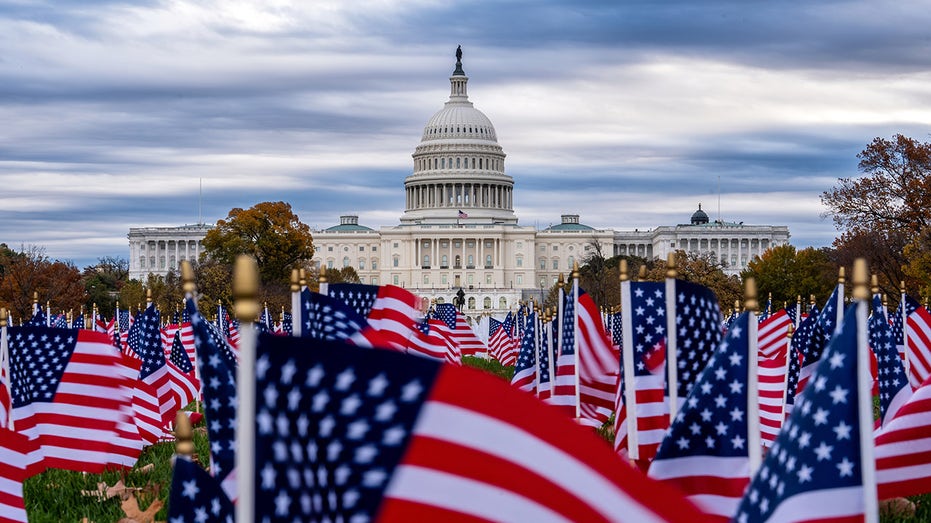The Senate did not drag out the final passage of the interim spending bill to end the government shutdown. You might think otherwise—especially after the Senate broke a filibuster on the bill just before 11 p.m. ET Sunday night. So why didn’t the Senate proceed immediately to final passage?
After all, the plan had to go to the House. Flight delays were piling up. Federal workers were at the end of their rope, going without paychecks. SNAP benefits were in limbo. So why not just step it up?
Well, it’s more complicated than that. And believe it or not, the Senate kind of did step it up—or at least from the Senate’s perspective.
—
### Several Senate Factions Hesitated to Vote Immediately
There were several Senate factions not ready to vote right away to end the shutdown last Sunday. It was clear the Senate would eventually pass the bill to fund the government, despite the worsening impacts of the shutdown happening by the hour.
Senator Rand Paul (R-Ky.) was the only Republican who broke with his party and voted **no** on the test vote to break a filibuster on the deal to reopen the government. Paul voted **nay** because he wanted a change in the bill related to hemp.
The measure prevents “unregulated sales” of intoxicating hemp-based products at gas stations and small retailers. However, it preserves the sale of non-intoxicating CBD in other hemp-related products.
—
### Why Was the Senate Stymied Despite Breaking the Filibuster?
If the Senate got 60 votes Sunday night to break the filibuster—and only needs 51 to pass the bill—why was the Senate slowed down by Paul or even others?
Senator Markwayne Mullin (R-Okla.) told reporters there was a senator requesting a vote on an amendment to hold members’ pay in escrow during future government shutdowns. This would be in addition to Paul’s request for a vote on an amendment related to hemp policy.
While Paul’s request was previously known, this additional ask highlights the precarious balance of any unanimous consent agreement in the Senate. Once one senator gets something, others often ask for something in return.
Paul told reporters he believed leadership was happy to secure his vote. But he said Senator John Kennedy (R-La.) blocked that for a short period.
Meanwhile, Mullin said Democrats went “radio silent” on whether they would yield back debate time to speed up consideration of the bill. Any single senator could drag the process out for days, so cooperation from all sides was crucial to bringing the shutdown to a quick end.
—
### The Complex Senate Procedure to Reopen the Government
Let’s break down the Senate process—it can get complicated.
The vote Sunday night was on breaking a filibuster to proceed to the original House-passed spending measure from September. This required 60 votes. So, the Senate had just broken a filibuster to **begin** work on the bill.
By Senate rules, after breaking a filibuster, there can be up to 30 hours of debate before a final vote—unless Senator Paul or others agreed to expedite the process. This timeline would have taken the Senate to a minor procedural vote by dawn the following Tuesday.
—
### The Substitute Amendment Delay
Senate Majority Leader John Thune (R-S.D.) aimed, with a “wink and a nod,” to secure an agreement on Sunday by filing a “substitute” amendment. A substitute amendment removes the House’s old bill text and replaces it with the new spending package.
But filing a substitute amendment requires a new cloture motion to break a filibuster on that amendment. By rule, Thune couldn’t file cloture until the following Tuesday, due to a mandatory intervening day.
Thus, the Senate could not vote to break a filibuster on the substitute until last Thursday, again needing 60 votes.
—
### The Shutdown Could Have Been Prolonged by Procedure
If the Senate adopted the new text on Friday, Thune would have had to file cloture again on the underlying bill, wait a day (Saturday), and then hold another vote to break a filibuster (again requiring 60 votes) on Sunday.
This process meant the Senate would have finalized the newly revamped spending bill on Monday.
Meanwhile, the House would not have taken up the bill until Tuesday or Wednesday, potentially stretching the government shutdown even further.
Though technically “by the book,” this delay probably would not have happened. Still, it explains why it was in Thune’s interest to reach a deal with Paul to speed things up. Without it, Paul or other senators opposed to the bill could have slowed the process and extended the shutdown.
—
### Political Dynamics Behind the Scenes
Some core Democrats were reportedly upset that their party relented. Yet, these Democrats had an opportunity to prolong the shutdown but chose not to.
Others were happy to have colleagues carry the vote to open the government, even if they personally did not wish to vote “yes.”
As for Paul, he was particularly frustrated with the hemp provision. “It’s really contemptuous,” he said of the issue. “I’m not looking to hold things up. I’m looking to try to get things done.”
Paul’s goal was to condense the time—and he got a vote to strip out the hemp provision. But senators blocked it.
—
### Final Passage and Shutdown’s End
Without significant Democratic protest, the Senate approved the bill on Monday without major delays.
—
[Click here to download the full report.]
https://www.foxnews.com/politics/speakers-lobby-happy-new-year-shutdown-showdown-draws-close
